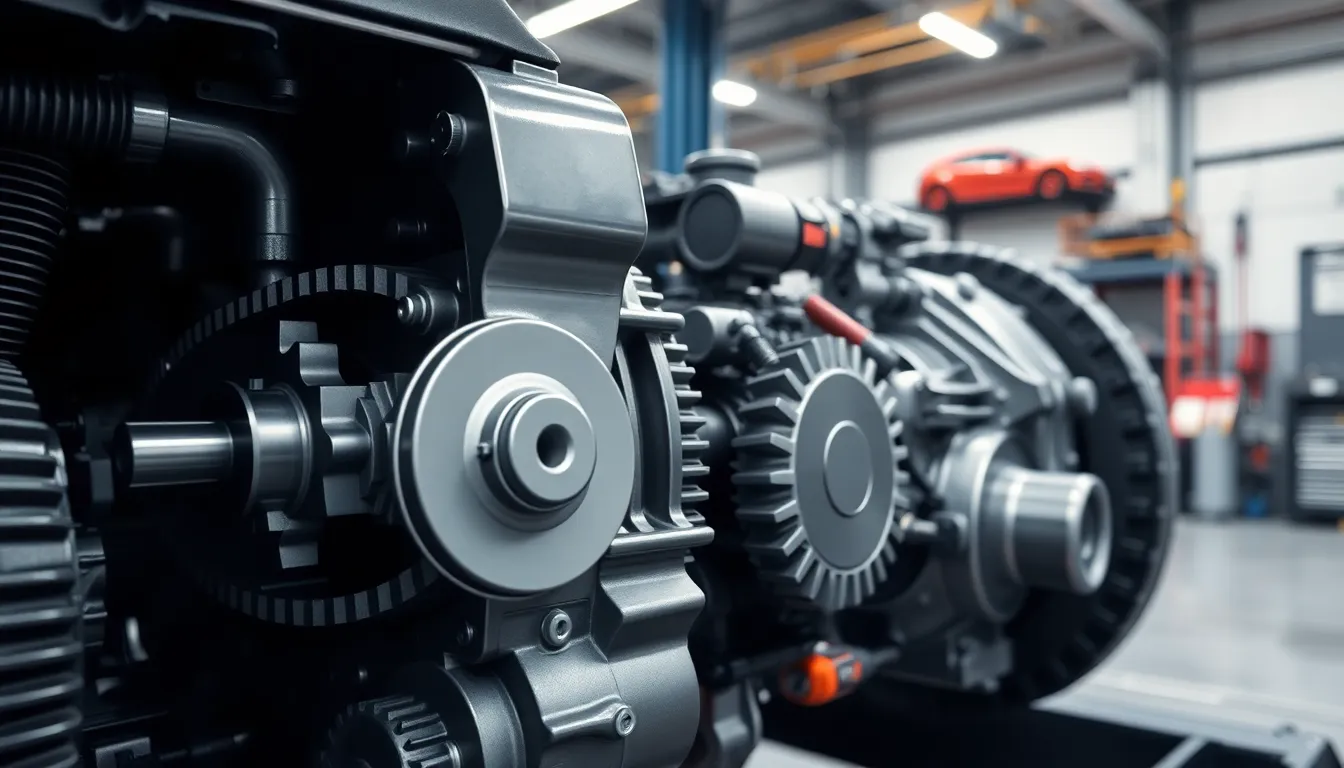Electric vehicles are zooming into the spotlight, and with them comes a whole new world of gear that’s as essential as a good cup of coffee on a Monday morning. From sleek charging cables to high-tech gadgets, the right gear can transform a mundane drive into an electrifying adventure. Imagine cruising down the highway with the wind in your hair and a dashboard that feels more like a spaceship than a car.
Table of Contents
ToggleOverview of Electric Vehicles Gear
Electric vehicles (EVs) come equipped with a variety of essential gear that enhances performance and driving experience. Various components not only ensure smooth operation but also provide drivers with necessary functionality.
Key Components of Electric Vehicles
The battery serves as the core component, supplying energy to the electric motor. An efficient motor converts that energy into motion, allowing for quick acceleration. Charging cables facilitate the connection between EVs and power sources, enabling convenient recharging. Regenerative braking systems capture energy during braking and send it back to the battery, improving efficiency. Additionally, onboard chargers convert AC power from charging stations into DC power suitable for the battery.
Importance of Gear in Electric Vehicles
Gear plays a crucial role in electric vehicles, impacting efficiency and overall performance. Enhanced charging cables minimize energy loss during power transfer. Advanced infotainment systems improve user experience by integrating navigation and entertainment features seamlessly. Their integration helps drivers stay informed about battery status, surrounding conditions, and traffic updates. These components work together to ensure safety, comfort, and connectivity, making EV driving a unique experience.
Types of Electric Vehicles Gear

Electric vehicles rely on various gear types to maximize performance and efficiency. Understanding these components is essential for enhancing the EV driving experience.
Transmission Systems
Electric vehicles utilize transmission systems to manage power delivery from the electric motor to the wheels. Some systems feature a single-speed transmission, simplifying operation. Others may employ multi-speed designs, improving efficiency at different speeds. Evolving technology has led to the development of direct-drive systems, eliminating traditional gear shifting. These innovations streamline power flow and reduce energy loss, while also offering smoother acceleration.
Differential Mechanisms
Differential mechanisms play a crucial role in delivering torque to the wheels. Electric vehicles commonly incorporate an open differential, allowing wheels to spin at different rates during turns. Many electric models also utilize torque vectoring differentials, enhancing performance and stability. These advancements allow for better traction and handling, especially in varied road conditions. By optimizing power distribution, differential mechanisms ensure a responsive driving experience, contributing to overall safety and control.
Performance Metrics of Electric Vehicles Gear
Electric vehicles (EVs) demonstrate impressive performance metrics influenced by their gear systems. Efficiency and power delivery play crucial roles in their operation.
Efficiency and Power Delivery
Electric motors provide instant torque, enhancing driving responsiveness. High-quality gear systems optimize power delivery from the motor to the wheels, minimizing energy loss. Variables in efficiency emerge from transmission designs, where single-speed systems often simplify operation. Multi-speed options, on the other hand, allow for tailored power management. Manufacturers such as Tesla and Porsche incorporate advanced direct-drive systems to improve acceleration, demonstrating expected improvements in drive quality. The integration of well-designed gear mechanisms directly impacts overall performance and driving enjoyment.
Impact on Driving Range
Driving range varies significantly based on gear efficiency and overall system design. Better gear components reduce energy consumption, extending the distance an EV can travel on a single charge. Factors influencing range include the weight of the gear, aerodynamics, and regenerative braking capabilities. Studies indicate that efficient gear systems can boost an EV’s range by approximately 10 to 15 percent. A focus on advanced materials can also contribute to weight savings, further enhancing overall driving distance. EV drivers benefit from improved gear configurations that help maximize their vehicle’s performance and sustainability.
Innovative Technologies in Electric Vehicles Gear
Electric vehicles incorporate groundbreaking technologies that enhance performance and sustainability. Notably, regenerative braking systems and smart gear technologies play crucial roles in maximizing efficiency.
Regenerative Braking Systems
Regenerative braking systems recover energy during deceleration. While conventional brakes dissipate energy as heat, these systems convert kinetic energy back into electrical energy, storing it in the battery. By doing so, they improve overall driving range. Vehicles equipped with this technology can experience efficiency gains of up to 20 percent. This innovation not only reduces wear on traditional brake components but also contributes to a smoother driving experience. Consequently, regenerative braking plays a vital role in the efficiency of electric vehicles.
Smart Gear Technologies
Smart gear technologies leverage advanced software to enhance gear performance. These systems analyze real-time data to optimize power delivery based on driving conditions. Such innovations ensure seamless transitions between gears, leading to improved acceleration and handling. In many models, algorithms can predict shifts, adapting to driver habits for a personalized experience. This technology contributes to better energy management, mitigating energy loss. Efficiency improvements from smart gear can translate into substantial driving range extensions, benefitting both performance and sustainability.
The evolution of electric vehicles is driven by innovative gear and accessories that enhance every aspect of the driving experience. From advanced charging solutions to sophisticated transmission systems, each component plays a crucial role in maximizing performance and efficiency.
As technology continues to advance, the integration of smart gear systems and regenerative braking will further elevate the appeal of EVs. These innovations not only improve driving dynamics but also contribute to sustainability, making electric vehicles a smart choice for the future. Embracing this gear not only transforms the way people drive but also fosters a more connected and eco-friendly automotive landscape.









